The Pros and Cons of Sliding Doors
Table of Contents
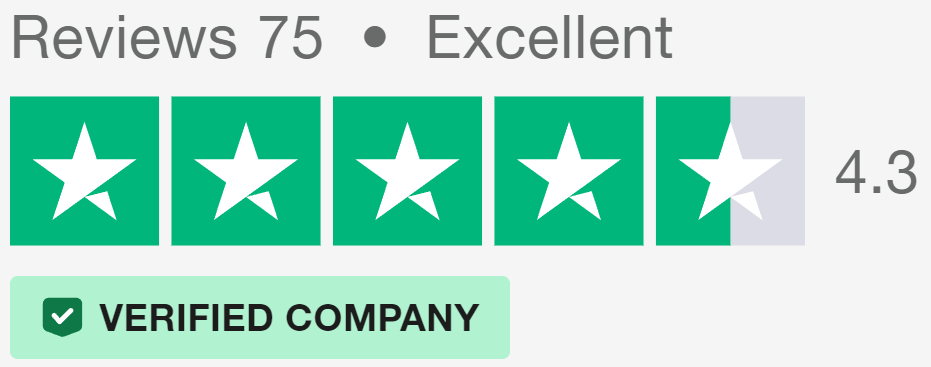
What Are Sliding Doors?
Modern sliding doors run along tracks that guide large glass panels to slide past one another. The basic principle hasn’t changed much since their introduction in the 1970s, though today’s systems offer better materials and smoother operation.
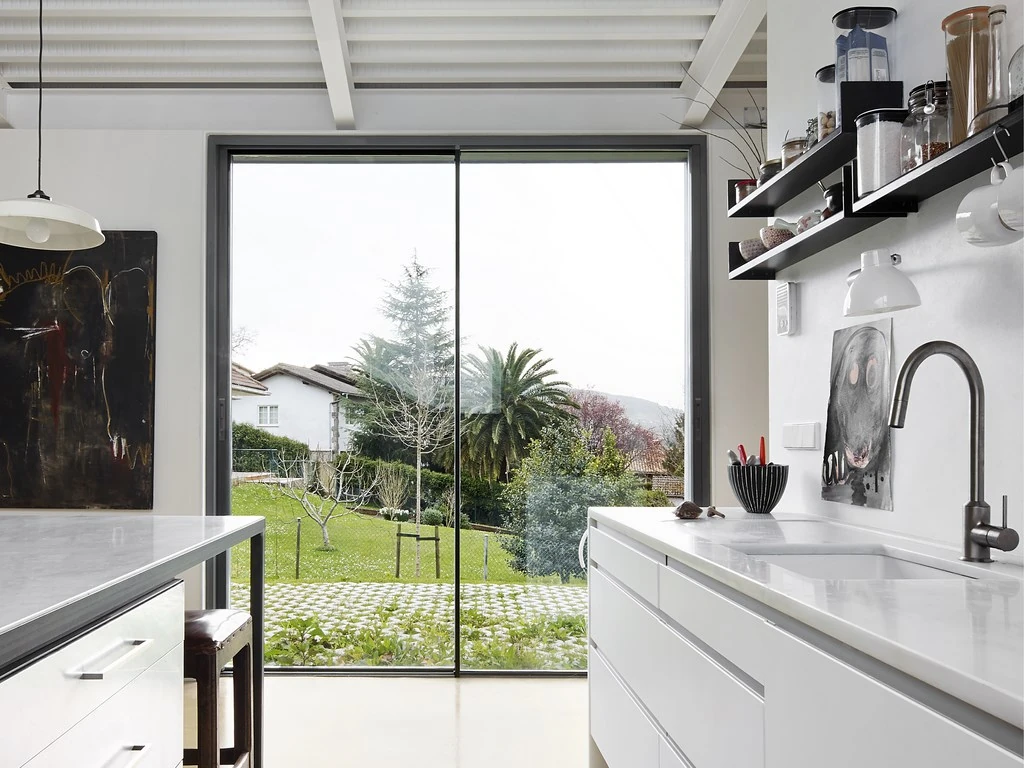
Types of Sliding Door Systems
Slimline sliding patio doors represent the most sought after amongst the types of sliding doors in British homes, featuring minimal frame widths and expansive glass areas. The running gear – the wheels and tracks that make sliding possible – comes in two main variants. Standard inline systems slide horizontally with minimal lifting force needed, while lift-and-slide mechanisms raise the door slightly off its track during operation, reducing friction and making even large panels easy to move.
Key Components
The frame forms the backbone of any sliding system, typically made from aluminium, uPVC, or timber. Thermal breaks within metal frames prevent heat loss, while multi-point locking systems embedded in the frame maintain security. High-quality sliding doors use double or triple glazing mounted in precision-engineered roller units.
Frame Materials and Performance
Different frame materials suit different budgets and requirements. Aluminium offers slim profiles and durability, though it costs more than uPVC. When comparing materials for sliding doors, timber provides natural insulation but needs regular maintenance to prevent warping. Modern uPVC frames balance cost and performance, though they can’t match aluminium’s slender lines.
Technical Features
The pros and cons of sliding doors often link back to their mechanical design. Rollers, tracks and weather seals work together to create reliable movement and weather resistance. Modern systems use synthetic bearings and anodised aluminium tracks for smooth operation without metal-on-metal contact. Most installations feature toughened safety glass as standard, while advanced units may include self-cleaning coatings or solar control properties.
Design Pros and Cons of Sliding Doors
Modern sliding doors create strong visual impact through their large glass panels and minimal frames. When comparing the pros and cons of sliding doors against other options, their clean lines and unbroken views stand out immediately.
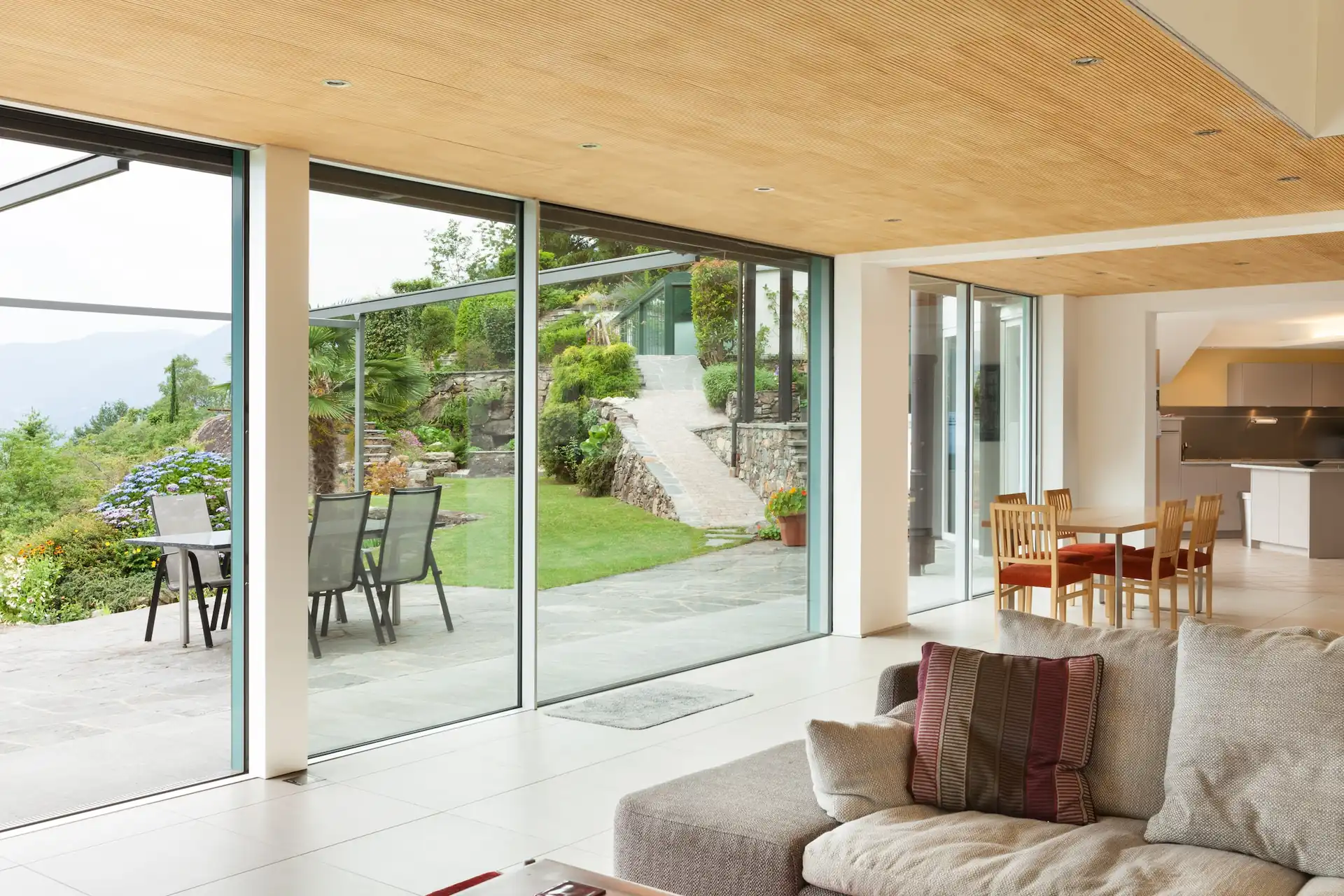
Visual Benefits
Wide glass panels dominate the appearance of sliding doors, bringing natural light deep into living spaces. Ultra slim sliding doors push this advantage even further, with frames as narrow as some windows. Removing visual barriers between rooms or garden spaces creates a sense of extra space, while maintaining clear sight lines through the glass.
The minimal frame profiles suit contemporary architecture particularly well. Powder-coated aluminium frames come in dozens of colours, matching or contrasting with existing windows. Black frames remain a popular choice, appearing to almost disappear against the glass when viewed from inside.
Design Limitations
The pros and cons of sliding doors become apparent when examining their structural requirements. Load-bearing needs mean frames can’t shrink beyond certain dimensions – particularly at the bottom track, which must support the entire door’s weight. Track systems also require more visible framework than some alternatives, especially at the sides where multiple panels stack.
Glass panels bring their own restrictions. Larger sizes increase weight substantially, limiting how many panels can practically slide. Opening configurations stay relatively fixed – unlike bifolds, sliding doors can’t fully clear an opening. Most installations allow only half the total width to open at once.
Frame and Panel Configurations
Panel arrangements need careful planning to work effectively. Two-panel designs offer simplicity but restrict opening sizes. Three or four panels provide more flexibility, though the fixed panels limit access width. Sliding configurations always need at least one fixed panel, reducing the potential for completely open spaces.
Design Verdict
Glass dominates the visual experience with sliding doors, creating striking features in any room. The clean lines and reduced framework of modern systems offer impressive views, though structural needs impose some limits on design freedom. Panel arrangement choices determine much of the final look, balancing open space against practical operation.
For rooms needing lots of natural light, sliding doors excel at providing uninterrupted glazing. Their minimal frames avoid the numerous splits seen in bifold doors, while offering larger glass panels than French doors can accommodate. However, the inability to completely clear an opening might not suit all spaces or preferences.
Practical Benefits and Drawbacks
The daily practicality of sliding doors shapes how people use their spaces. Looking at the pros and cons of sliding doors reveals important differences in their everyday operation compared to other door types.
Everyday Advantages
Space efficiency stands out as a major benefit – sliding panels move parallel to the wall instead of swinging into the room. This allows furniture placement right up to the doorway without blocking movement. Modern sliding mechanisms glide smoothly with minimal effort, making operation easy even with large glass panels.
Thermal performance impresses in well-made systems. Double-glazed units with thermal breaks in the frames reduce heat loss substantially, while solar control glass helps manage temperature year-round. The tight seals around sliding panels keep draughts out more effectively than many hinged doors.
Security Features
Multi-point locking systems secure the doors at several points along the frame. Toughened safety glass resists breaking, while anti-lift mechanisms prevent panels being forced off their tracks. Modern sliding doors often include internal beading – meaning the glass can’t be removed from outside.
Common Issues
When weighing up the pros and cons of sliding patio doors, some practical limitations emerge. Tracks need regular cleaning to prevent dirt build-up that could hamper smooth operation. Ground-level installations might collect leaves and debris, requiring more frequent maintenance than elevated doorways.
Opening sizes remain restricted by the need for fixed panels. Even the largest systems can only open about half their total width, limiting airflow compared to bifolds or French doors. While modern mechanisms run smoothly, very large panels can still feel heavy to operate, particularly in lift-and-slide systems.
The bottom track presents challenges in some situations. Though modern low-threshold options reduce the step-over height, completely flush thresholds aren’t usually possible with sliding doors. Water drainage channels in the track help prevent flooding but need keeping clear of blockages.
Practical Living Verdict
Day-to-day operation reveals the real value of sliding doors in different settings. Their space-saving design and smooth operation work particularly well in smaller rooms or areas with limited clearance. Security features match or exceed other door types, while thermal performance helps control energy costs.
Maintenance needs vary by location and usage but generally remain manageable. Regular track cleaning and occasional adjustment of running gear keeps operation smooth. The pros and cons of sliding doors often depend on specific installation details – proper drainage, appropriate threshold heights, and suitable panel weights all influence long-term satisfaction.
Ventilation options prove more limited than some alternatives, though strategic panel placement can help. Users wanting maximum airflow might prefer other door types, but those prioritising space efficiency and security often find sliding doors meet their needs well.
Room by Room Sliding Door Benefits
Different spaces in the home present unique challenges for door installation. The pros and cons of sliding doors vary substantially depending on where they’re fitted and how they’re used.
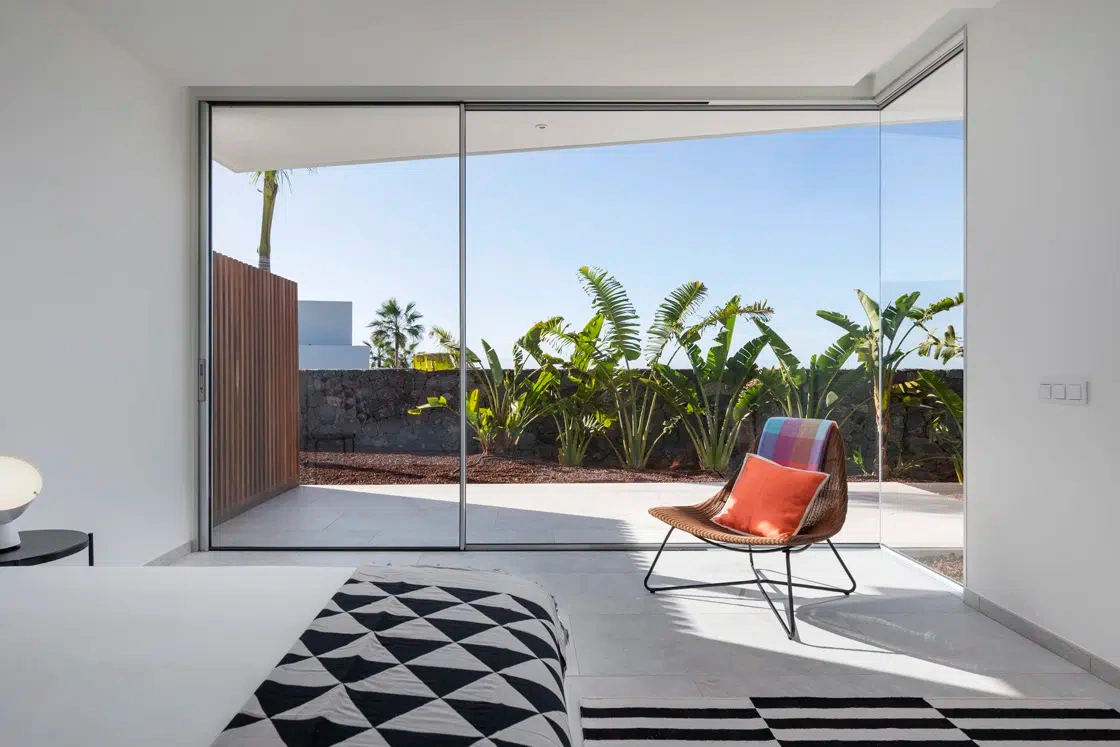
Kitchen Garden Doors
Kitchen-to-garden sliding doors offer excellent views while cooking or dining. Large glass panels let you keep an eye on children playing outside, and natural light improves the atmosphere for food preparation. The flat tracking system proves particularly useful in kitchens, where step-free access helps when carrying dishes or groceries outside.
Cooking steam and food odours need proper ventilation, which partial sliding door openings might not always provide. Opening sizes limited to around 50% of the total width can restrict airflow on hot days. However, sliding mechanisms keep door panels completely out of the way of kitchen traffic, unlike swing-doors that might block busy cooking areas.
Rain protection varies by installation height and threshold design. Higher door thresholds keep water out more effectively but create more noticeable steps. Lower thresholds improve access but need better drainage and more frequent cleaning, especially in exposed kitchen-garden installations.
Internal Kitchen Living Room Doors
Sliding interior doors between kitchen and living spaces save valuable floor area in open-plan layouts. The pros and cons of sliding glass doors become particularly relevant here – while they allow light flow and visibility between spaces, they also need careful planning for privacy and noise control.
Sound insulation depends heavily on glass thickness and seal quality. Double-glazed panels reduce noise transfer more effectively than single glazing, though at higher cost. When cooking smells are unwanted in living areas, tight seals around sliding panels help contain them better than many folding door systems.
Door positioning needs careful thought in these locations. The fixed panel location determines traffic flow patterns, while handle positions must work well from each side. Panel weight matters more for frequently-used internal doors, making lighter systems preferable for daily operation.
Balcony Access
Balcony doors face unique challenges with wind loads and weather exposure. The pros and cons of sliding doors in raised positions include excellent wind resistance when closed, but potential handling difficulties in gusty conditions. Their wide glass areas offer unobstructed views, particularly valuable from higher floors.
Security requirements change at height, with different locking needs than ground-floor installations. Multi-point locks still matter, but anti-lift mechanisms become especially important.
Glass specification choices carry more importance in balcony installations. Solar control coating helps manage heat gain in south-facing units, while self-cleaning options reduce maintenance needs at height. Wind pressure ratings need careful checking, especially for larger panels in exposed locations.
Location Specific Verdict
Room usage patterns determine how well sliding doors serve each space. Kitchen installations benefit from easy cleaning and unobstructed workflows, though ventilation needs extra planning. Internal doors between living spaces and kitchens offer flexibility in space division while maintaining sight lines and light flow.
Balcony applications showcase the stability advantages of sliding systems, with weather resistance and security features proving particularly valuable. However, each location brings specific requirements for threshold heights, drainage design, and panel weights that influence overall success.
Glass choices and frame specifications need matching to each location’s specific demands. Kitchen installations might prioritise easy cleaning and heat resistance, while balcony doors focus more on wind loading and thermal efficiency. Internal doors often emphasise smooth operation and sound control over weather resistance.
Panel size limitations vary by location too. Kitchen-garden doors often suit larger panels for better views, while internal doors might work better with lighter, easier-moving sections. Balcony installations must balance desired opening sizes against wind load requirements and practical operation.
Alternative Door Options
Examining the pros and cons of sliding doors highlights where other door types might work better. Each alternative offers distinct advantages while addressing common sliding door limitations.
French Doors
Traditional French doors remain popular for smaller openings up to about 2 metres wide. Their hinged design allows full opening of the space, unlike sliding systems that always keep one panel fixed. This wider opening improves ventilation – particularly useful in kitchens or south-facing rooms where heat builds up quickly.
Cost advantages appear in smaller installations, where French doors often prove cheaper than sliding systems. Their simpler mechanism means fewer moving parts to maintain, while standard hinges make repairs straightforward. However, each door leaf needs clearance to swing, limiting furniture placement and usable space.
The divided glass panels in French doors create more frame lines than sliding doors, interrupting views and reducing natural light. Their outward or inward swing might not suit all spaces, especially in windy areas where door catches become necessary. When comparing the pros and cons of sliding doors to French doors, the choice often depends on available space and opening width.
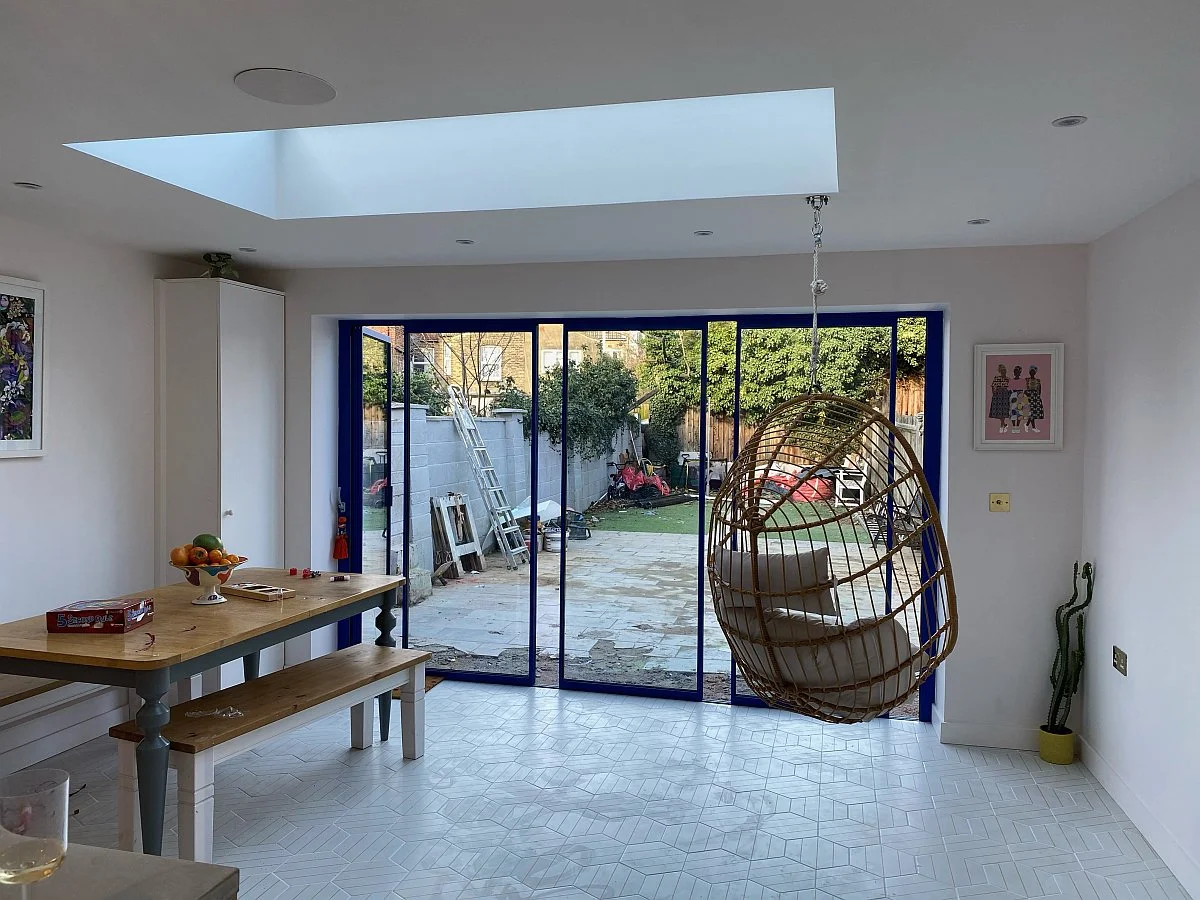
Slide and Stack Doors
Slide and stack doors (also known as slide and fold or slide and turn doors) combine sliding and pivoting movements, allowing panels to slide along a track before turning 90 degrees to stack. This system permits almost complete opening of the doorway while avoiding the space requirements of bifolds. The running gear supports smooth operation even with multiple panels.
The tracking system needs more depth than standard sliding doors, requiring careful planning during installation. Additional pivot points introduce more mechanical complexity, potentially increasing long-term maintenance needs. However, the ability to stack panels perpendicularly to the opening creates interesting architectural possibilities.
Weather resistance varies with installation quality. The multiple meeting points between panels create more potential spots for drafts compared to sliding doors. Sound insulation also depends heavily on seal effectiveness at these junctions, though well-fitted systems perform similarly to other door types.
Bifold Doors
Bifold systems fold their panels into compact stacks, offering nearly complete opening of the doorway. Their popularity stems partly from this ability to remove almost all barriers between spaces. Multiple configuration options allow adaptation to different opening widths and user preferences.
Operating mechanisms have improved substantially over recent years, though they still require more force than sliding doors. The folding action means more points of movement, increasing the importance of proper adjustment and maintenance. Frame thickness tends to exceed sliding doors and other sliding door alternatives due to the need for robust hinges and running gear.
The pros and cons of sliding doors become particularly relevant when compared to bifolds in larger openings. While bifolds offer fuller access, their numerous frame lines can interrupt views more noticeably than sliding panels. The accordion-style movement requires clear space on one side for the panel stack, which might limit furniture placement options.
We’d Love to Help You
Vision Glass Doors is a designer, manufacturer, and installer of premium door systems. We are a family run business with over 20 years’ experience and 5,000 installations across the UK.
Our leading range of door systems include Ultra Slim – Slide and Turn Doors, Slimline Sliding Patio Doors and Frameless Glass Doors. Suitable for various internal and external applications, they are applicable to residential and commercial projects.
Click Quick Quote Online for a free quotation within 24 hours. Alternatively, call or email us on 01582 492730 or at info@visionglassdoors.co.uk.

